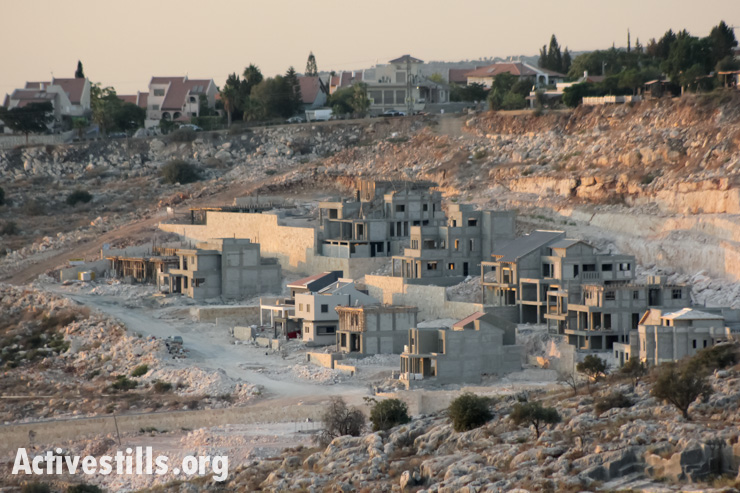Instead of earnestly pursuing peace, consecutive Israeli governments have attempted three policies: separating the Palestinians, erasing borders and boundaries, and attempting to change the world’s perception of reality. All three have failed.
Since Benjamin Netanyahu began his second term as prime minister in 2009, he has resisted reaching a two-state solution but he also claims not to want a single state, with or without a Jewish hegemony. Nobody seems to be willing to simply ask the prime minister: what do you intend for Israel and the Palestinians in five or 10 years from now?
In lieu of a vision, Netanyahu has aggressively pursued three policies: separation between Gaza and the West Bank (and within), the merging of Israel and the West Bank, and messaging the rightness of both — hasbara.
Although these policies are all ostensibly means to some elusive end, they have been implemented with zeal as if they are ends in themselves. Yet all three have failed.
Separation — FAILED

Israel has long pursued the physical, political, economic, cultural and religious separation between Gaza and the West Bank. The hope was that Israelis, the international community and no less important, Palestinians themselves, would view these societies as different entities, requiring different political solutions. The idea of a cohesive Palestinian state was supposed to dissolve.
It didn’t start with Netanyahu; physical movement restrictions between the regions from the early 1990s were compounded by Ariel Sharon’s partial withdrawal from Gaza in 2005. The latter created a sense of victory for Hamas and touched off the political rift that paralyzes Palestinian politics to this day. Israelis increasingly view this chopped up society as unsuited to statehood.
But nobody else does. Some Palestinians envision the 1967 territories, others yearn for the whole land (just as Israel loves to generate maps showing the whole land for itself). Under no Palestinian scenario does Palestine not include Gaza.
The international community didn’t read the memo either. In the recent UN report investigating Protective Edge, the commission of inquiry treated the two parts as a contiguous political whole. It acknowledges that Hamas controls Gaza internally but views the latter as part of the state that has acceded to international treaties on human rights. Which is lucky for Israel, because it meant the UN commission of inquiry held Hamas accountable to international human rights law – and for violations of it.
Israel also nurtures separation within the West Bank. Flying checkpoints shift around arbitrarily; the separation wall cuts people off, and settlement activity is designed with separation in mind. The “E-1” region would bisect the West Bank laterally, though not much has happened there yet. Recent activity elsewhere includes a new settlement (with private foreign funding and elaborate efforts at deception) that further connects the settlements south of Jerusalem to Hebron, bisecting the region vertically. Filling the land between the isolated settlement-city of Ariel and the Green line is a new neighborhood now morphing into its own town.
Yet these efforts haven’t dented the desire for Palestinian statehood; they simply make it increasingly impossible to achieve in the old forms. The result is Palestinian rage due to the growing gap between expectation and reality, and increasing awareness of Israel’s policies among international observers. The fact that the West Bank separation (and encroachment) efforts are incremental, small and technical fools no one — except Israelis.
Merger — FAILED

Alongside efforts at separation between Palestinian people and land, Israel works hard to erase lines between its sovereign territory and the West Bank.
The 2011 anti-boycott law allows civil suits against those who call for boycott against any area “under Israel’s control.” Some slick language advisor probably recommended using that term rather than “occupied territories,” hoping listeners will forget that in those areas stateless people have been living under military law for nearly five decades, while Israeli citizens live normally.
No Palestinian can forget that. The White House hasn’t either. An item in the U.S. Trade Bill passed last week would oblige the U.S. to actively discourage boycott efforts of “Israeli-controlled territories.” The administration ultimately supported the bill, but not before voicing a ringing slapdown against the conflation of sovereign Israel with the areas under military occupation.
Perceptions are indeed changing, but in the opposite direction. Chemi Shalev of Haaretz wrote: “The attempt to blur the boundary lines between sovereign Israel and the settlements in the territories ended up emphasizing them.” In other words, the more Israel tries to create facts in the future, the more people know about the present. The myth that Israel “gave back land in the Oslo years,” has been replaced by widespread understanding that Israel controls both the West Bank and has effective control, as the UN report clarifies, over Gaza.
Further, as a result, the international community blurs the lines in one direction: Israel’s resposibility for the lives and human rights of Palestinians. The slow-dawning international realization that occupying powers are responsible for the rights of the occupied population under international law means that Palestinian demands for civil, political, and human rights fall on open ears.
Messaging — FAILED

Israel’s third policy is to disguise the first two in words unfettered by reality. This yields contradictions and plain weirdness.
One example is the common response to charges of apartheid these days. It is in these very moments that Israeli messagers (as distinguished from regular “messengers”) re-discover the Green Line.
Israel becomes the only democracy in the Middle East. A land where Arabs can vote and be elected and Arab parliamentarians are free to say mean things about Zionism. So the culture and education ministers are on a rampage against an Arab theater, and the law allows housing discrimination — no country is perfect.
At these moments, there is no West Bank and Gaza at all. The 1967 borders of Israel become perfectly defensible, when they are defending against apartheid.
This week, the absurdities around messaging reached new heights when a survey was released showing massive partisan gaps in support for Israel in the U.S., Israel’s warmest audience. Democrats are losing sympathy and patience, while Republicans toe to the party line — theirs and Israel’s. The survey was conducted by Frank Luntz, messager extraordinaire for The Israel Project. His task at TIP for years and untold sums? To find the sharpest language to change minds. His findings? Israel’s image has reached a new low among U.S. political elites. His solution? More messaging.
Some say Israel is start-up nation of brilliant minds. Judging by the failure of his three main policies on the most towering issue in Israeli and Palestinian life, Netanyahu is not one of them.


